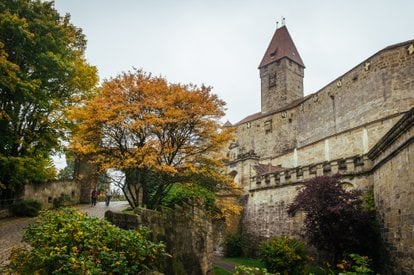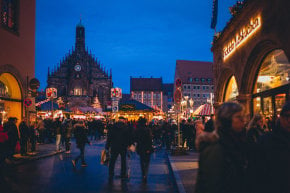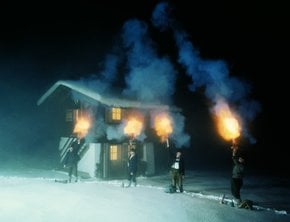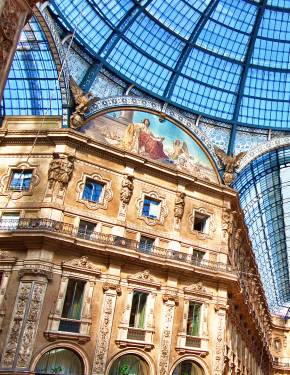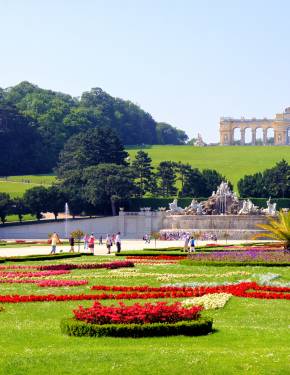Castles and Nature in Bavaria 2026
Bavaria is a country of castles and you'll have the chance to discover all of them
Best time: May–November
If you are looking for a castle from a fairytale, Bavaria is the place to go. Its name, 'Castle Country,' is certainly well-earned. With structures dating back over a thousand years, these historical landmarks once served as royal palaces and fortresses. Today, they attract millions of visitors eager to explore their architectural beauty and the stunning natural landscapes surrounding them.
The Best Time to Visit
While Bavarian castles can be enjoyed year-round, the best time to visit is during the warmer months when the surrounding landscapes are lush and vibrant. Summer offers the fullest greenery, while autumn provides a stunning backdrop of golden foliage, making for memorable photographs. However, visiting in winter transforms the castles into a magical winter wonderland, with snow-covered rooftops and serene, frosty landscapes that create a fairy-tale ambiance perfect for those seeking a quieter, picturesque experience.
Hours and Tickets
Most Bavarian castles are open year-round, with hours varying by season. Most of the castles are open daily from 9 am to 6 pm in the summer and from 10 am to 4 pm in the winter. Ticket prices also vary, around €5-15, with guided tours often required for entry. The best time to visit is during the warmer months when the surrounding landscapes are lush and vibrant. Summer offers the fullest greenery, while autumn provides a stunning backdrop of golden foliage, making for memorable photographs. However, visiting in winter transforms the castles into a magical winter wonderland, with snow-covered rooftops and serene, frosty landscapes that create a fairy-tale ambiance perfect for those seeking a quieter, picturesque experience.
Neuschwanstein Castle (Schloss Neuschwanstein)
Neuschwanstein Castle is perhaps the most famous castle in the world, and its origins are steeped in the romantic ideals of King Ludwig II. Perched on a rugged hill with dramatic views of the Alps and nearby lakes, Neuschwanstein resembles a castle straight out of a fairy tale. The interiors, inspired by the operas of Richard Wagner, are lavishly decorated, reflecting the king’s passion for myth and legend. Built in the 19th century in southwest Bavaria, Germany, this iconic castle is known not only for its breathtaking architecture but also as the inspiration behind Disney’s “Cinderella” and “Sleeping Beauty” castles. Historically, the castle symbolizes Ludwig II’s attempt to create a refuge from public life, embodying his fascination with the Middle Ages and his desire to live in a world of fantasy. The castle’s construction, however, contributed to the financial troubles that led to Ludwig’s deposition.
Located in the village of Hohenschwangau, near Schwangau and Füssen, the castle is not directly accessible by car, and visitors must park in designated areas in the village. Parking costs range from €3 for motorcycles to €13 for campers. From the parking lots, you can reach the castle by foot (a 40-minute uphill hike), by horse-drawn carriage (costing €8 uphill and €4 downhill), or by shuttle bus (starting at €3), which drops you near Marienbrücke, a viewpoint offering a stunning perspective of the castle.
Hohenschwangau Castle (Schloss Hohenschwangau)
Hohenschwangau Castle, located near Neuschwanstein, was the childhood home of King Ludwig II, offering insights into the king’s early life. The castle, a more modest and lived-in residence compared to the grandiosity of Neuschwanstein, provides a more intimate look at royal Bavarian life. Historically, Hohenschwangau was where Ludwig II spent his formative years, influenced by the romanticism of his father, King Maximilian II. The castle’s historical significance is further enhanced by its connection to the arts, as it served as a meeting place for artists, poets, and musicians of the time.
Imperial Castle of Nuremberg (Kaiserburg Nürnberg)
Imperial Castle of Nuremberg is another spectacular castle to visit. It stands as one of the oldest and most significant fortresses in Bavaria, with its origins tracing back to the early 11th century. This medieval stronghold was a center of power during the Holy Roman Empire, playing a crucial role in the governance of the empire. Despite extensive damage during World War II, the castle has been meticulously reconstructed. The complex includes the Imperial Castle (Kaiserburg), where history is brought to life through exhibits and guided tours. Nuremberg Castle’s historical significance lies in its role as the residence of German kings and emperors, making it a symbol of imperial power in the medieval period.
Located in the heart of Nuremberg, the castle is best accessed via public transport, such as a tram to the ‘Tiergärtnertor’ stop or the nearby ‘Lorenzkirche’ station. Visitors should note that there are no parking facilities at the castle itself; instead, parking is available in the signposted multi-story car parks throughout the city center.
Linderhof Palace (Schloss Linderhof)
Linderhof Palace is a smaller, more intimate retreat built by King Ludwig II, reflecting his desire for solitude. Despite its size, the palace is richly decorated, and the surrounding gardens, featuring fountains, pavilions, and manicured lawns, are a highlight. Linderhof’s historical significance is tied to Ludwig II’s reclusive nature and his interest in French culture, as it was modeled after the Petit Trianon at Versailles. The palace is the only one of Ludwig’s grand projects that he lived to see completed, making it a poignant reminder of his troubled reign.
Situated in the Graswang Valley near Ettal, the palace is accessible by car via the A95 motorway, followed by the B2 to Oberau, and then the B23 (Ettaler Straße). Upon reaching Ettal, turn left onto St2060, and in Linderhof, turn right to reach the palace. Parking is available with charging stations for electric vehicles. Public transport options include a train to Oberammergau with a connecting bus (9622) or buses from Oberau or Reutte (9624).
Marienberg Fortress (Festung Marienberg)
Marienberg Fortress, overlooking the city of Würzburg, is a symbol of the city’s long history. The fortress dates back to the 13th century and has served as a residence for prince-bishops. Today, it houses museums showcasing the history and art of the region. Marienberg Fortress’s historical significance is tied to its role as a strategic defensive site and as a residence for the prince-bishops who ruled Würzburg, embodying the city’s religious and military history.
Würzburg Residence (Würzburg Residenz)
The Würzburg Residence, a UNESCO World Heritage site, is celebrated as one of the most magnificent Baroque palaces in Germany. Constructed between 1720 and 1744, the palace was designed by the renowned architect Balthasar Neumann. His vision blended influences from the Palace of Versailles, Baroque Vienna, and Northern Italian architecture, creating a sublime example of early 18th-century opulence. The palace’s grandeur is highlighted by its renowned frescoes, painted by Giovanni Battista Tiepolo, including the world’s largest ceiling fresco in the Imperial Staircase. The Residence’s intricate decorations, including the mirror cabinet meticulously reconstructed after WWII, and its splendid 18th-century Court Chapel, showcase the height of Baroque art and architecture. Surrounded by meticulously designed gardens adorned with Chinese and Moorish statues, the Würzburg Residence exemplifies the historical and artistic significance of the prince-bishops’ secular and spiritual power.
Herrenchiemsee Palace (Schloss Herrenchiemsee)
Schloss Herrenchiemsee, built on an island in Lake Chiemsee, was another ambitious project of King Ludwig II, inspired by the Palace of Versailles. The opulent interiors and expansive gardens are a testament to Ludwig’s vision of grandeur. Schloss Herrenchiemsee’s historical significance is tied to Ludwig II’s obsession with absolute monarchy and his desire to emulate the grandeur of the French kings. The palace, however, was never fully completed, symbolizing the king’s tragic reign and unfulfilled ambitions.
Coburg Fortress (Veste Coburg)
Coburg Fortress dates back to 1056 and is the largest castle complex in Germany, expanded and renovated over the centuries. Today, it houses the Coburg Castle art collections, including treasures from the Coburg dukes, among the most important in Germany. The fortress offers panoramic views of the surrounding countryside. Coburg Fortress’s historical significance is vast, as it served as a key military stronghold during the Reformation and later as a ducal residence, influencing the region’s political and cultural development.
To reach the fortress, you can drive from nearby cities such as Bamberg, Würzburg, or Nuremberg, with parking available at a small lot near the castle or at a larger, more distant parking area. Alternatively, you can take a bus from Coburg’s town center or enjoy a scenic walk that takes less than 30 minutes. Taxis and the Veste Coburg Express offer additional convenience for visitors wishing to explore the castle and its surroundings.
Bamberg New Residence (Neue Residenz Bamberg)
One more spectacular castle to visit is the Bamberg New Residence. The striking example of Renaissance and Baroque architecture was built in two phases between 1602 and the late 17th century. This four-winged complex boasts over 40 staterooms adorned with intricate paintings, furniture, and tapestries from the 17th and 18th centuries. The residence’s rose garden, featuring around 4,500 roses in over 70 beds, is a must-see, especially in full bloom. The Bamberg New Residence holds historical significance as a symbol of the power and wealth of the Bamberg prince-bishops, reflecting the city’s importance as an ecclesiastical and cultural center in the Holy Roman Empire.
To reach the Bamberg New Residence by public transport, you can find railway information at the Deutsche Bahn website. The New Residence is approximately a 20-minute walk from the railway station, or you can take a bus from the central bus station to “Domplatz.” For car or coach travel, note that the New Residence does not have its own parking facilities. Instead, follow signs to the public car parks. Coaches cannot park at Domplatz, but free parking spaces are available at Pfeuferstraße, Mußstraße, and Margaretendamm.
Hermitage Old Palace (Eremitage)
Hermitage Old Palace in Bayreuth is part of a larger complex that includes gardens, fountains, and other historical buildings. The palace itself is a fine example of Baroque architecture, and the surrounding park is perfect for a leisurely stroll. The Hermitage Old Palace’s historical significance lies in its use as a retreat for the margraves of Bayreuth, reflecting the Enlightenment ideals of the time, where nature and art were harmoniously combined.
Practical info
External resources
- Marienberg Fortress (Official website)
- Neuschwanstein Castle (Official website)
- New Residence in Bamberg (Official website)
- Hohenschwangau Castle (Official website)
- Veste Coburg (Official website)
- Linderhof Palace (Official website)
- Schloss Herrenchiemsee (Official website)
- Hermitage Old Palace (Official website)
Find hotels and airbnbs near Castles and Nature (Map)
- New Residence / Neue Residenz
- Veste Coburg
- Linderhof Palace / Schloss Linderhof
- Imperial Castle of Nuremberg / Kaiserburg Nürnber
- Neuschwanstein Castle / Schloss Neuschwanstein
- Marienberg Fortress
- Würzburg Residence
- Nymphenburg Palace
- Fürstenried Palace
- Hohenschwangau Castle
- Schloss Herrenchiemsee
- Hermitage Old Palace





